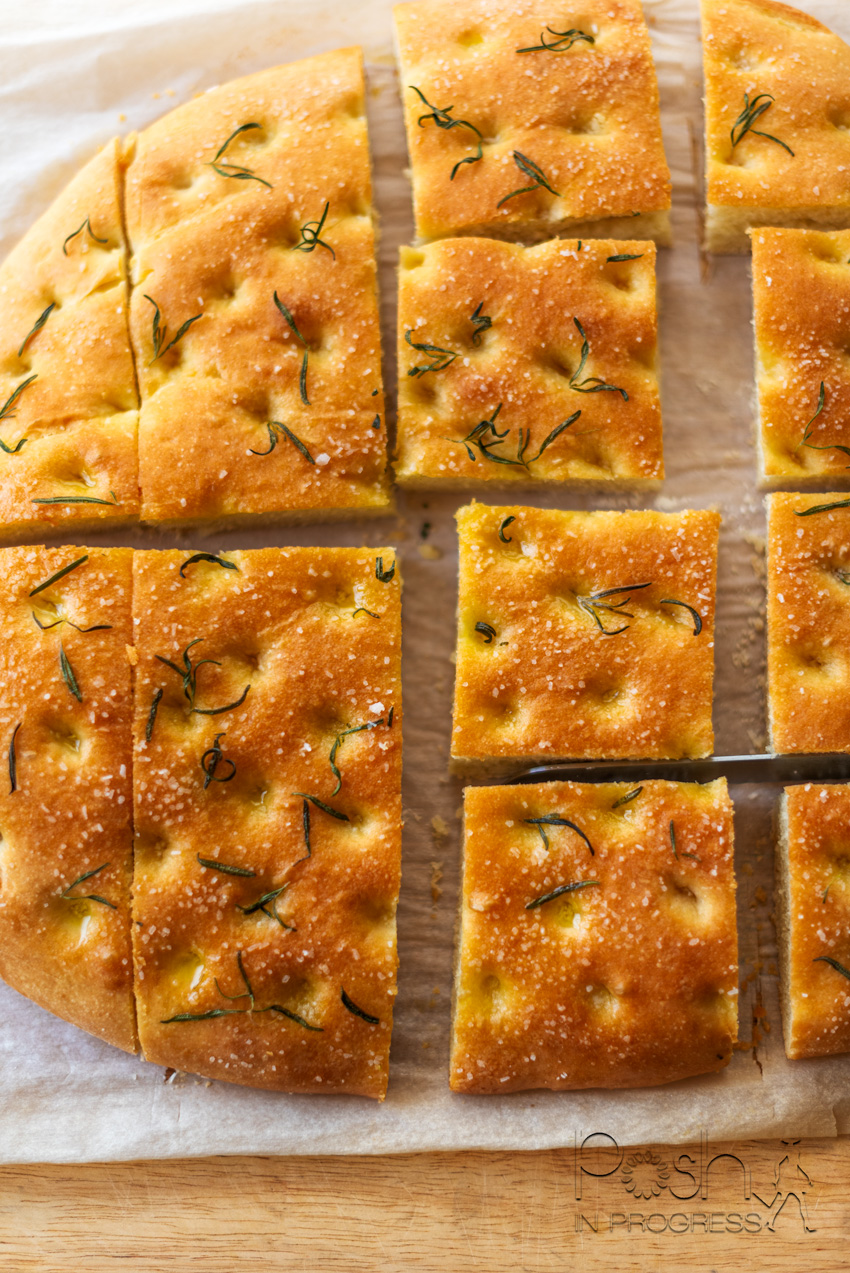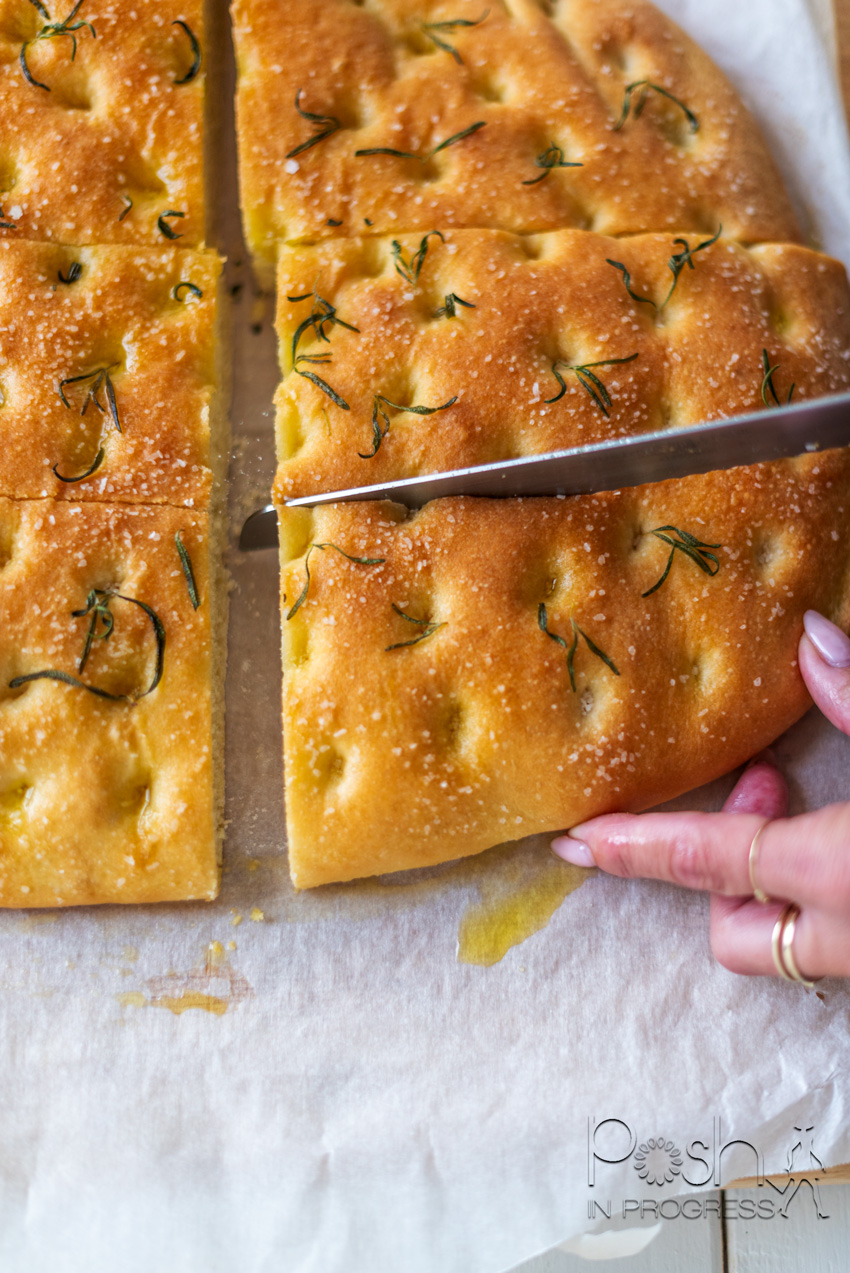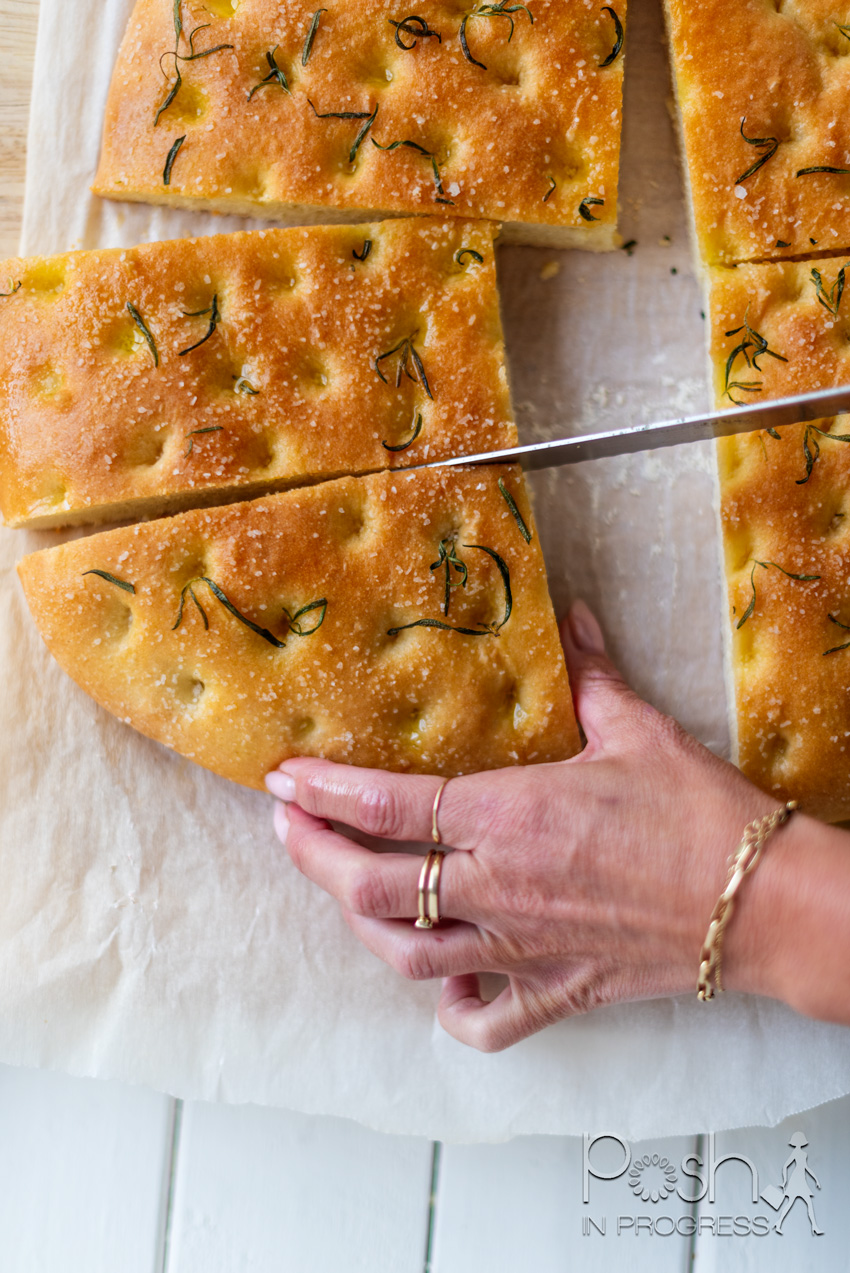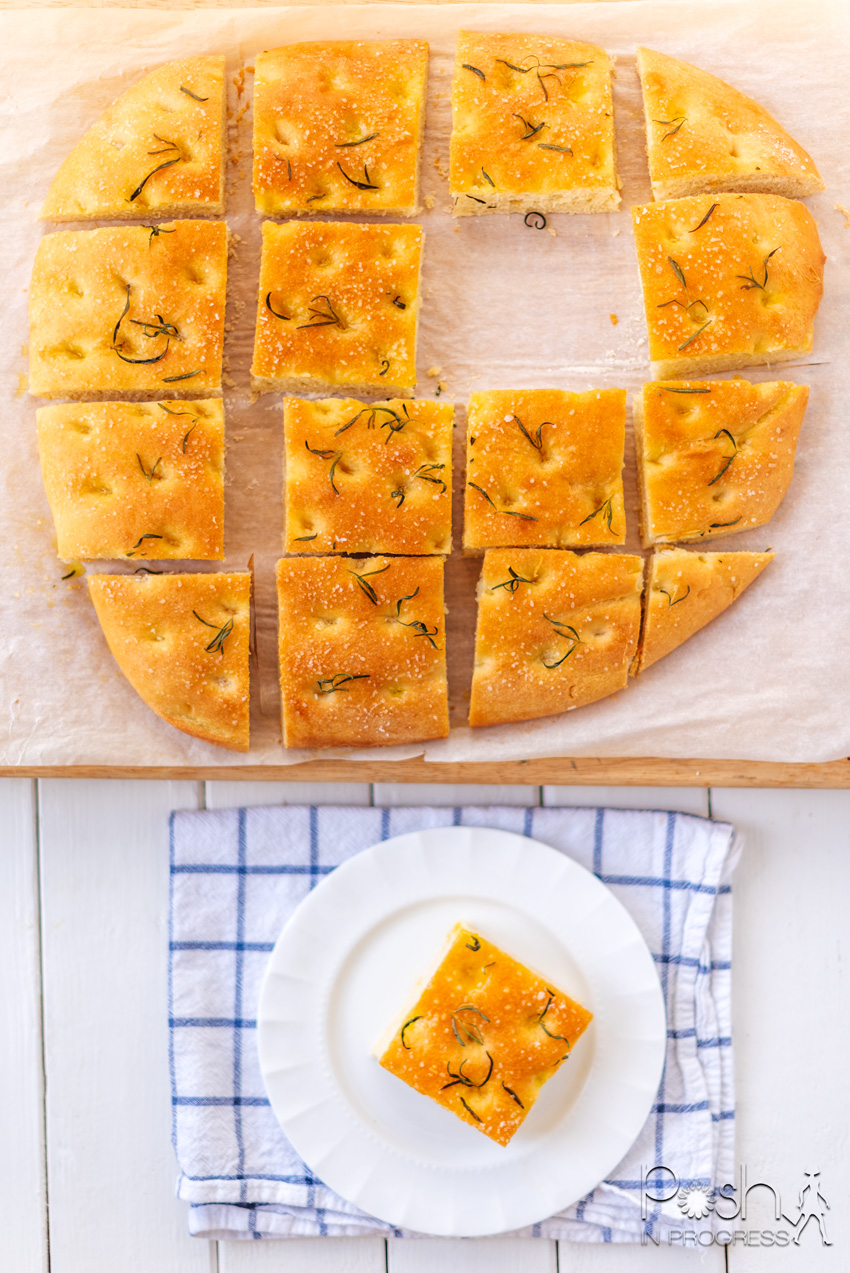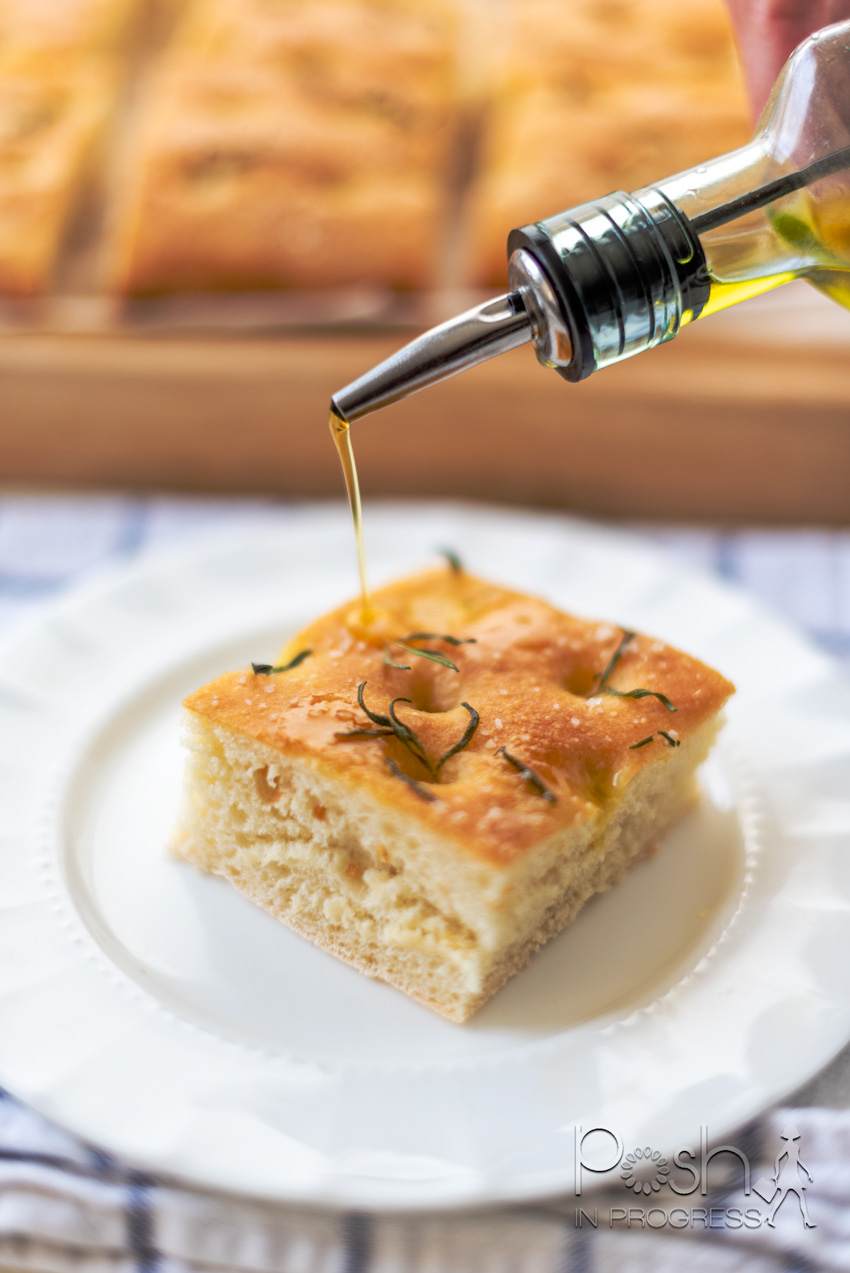Easy Focaccia Recipe: This Rosemary Focaccia is So Delicious
There’s something magical about the aroma of freshly baked bread wafting through the kitchen. A lot of people think making homemade bread is a great feat, but it’s actually so easy. When it comes to flavor-packed bread, rosemary focaccia is a true standout. In this blog post, I’ll share an easy focaccia bread recipe, explore the origins of focaccia, and talk about the art of growing and caring for the star of the show—rosemary.
The Origins of Focaccia
Focaccia, a traditional Italian flatbread, has a history that dates back centuries. Originating in ancient Rome, this bread has evolved into various regional specialties, each with its own unique twist. Focaccia is characterized by its flat, dimpled surface, perfect for capturing flavorful toppings like olive oil, herbs, and, of course, rosemary. Focaccia, a beloved Italian flatbread, has a storied history that weaves through the tapestry of Mediterranean culinary traditions. The roots of focaccia can be traced back to ancient Rome, where a simple flatbread called “panis focacius” was a staple among the working class. Over the centuries, this humble bread has evolved into the delectable and versatile focaccia we know today.
Ancient Origins
The term “focaccia” is derived from the Latin word “focus,” meaning hearth or fireplace. Historically, this bread was baked in the ashes of the hearth, imparting a distinctive flavor and rustic charm. The ancient Romans enjoyed it as a basic sustenance, unleavened and likely seasoned with simple herbs and olive oil.
Evolution in Liguria
As time passed, the art of bread-making evolved, and so did focaccia. The Liguria region, nestled along the northwest coast of Italy, played a pivotal role in shaping the modern incarnation of this flatbread. Here, focaccia gained popularity as a versatile canvas for flavors, adorned with regional ingredients like olives, herbs, and, of course, the iconic rosemary.
Regional Variations
Focaccia’s journey didn’t stop in Liguria. Different regions of Italy put their own spin on the bread, resulting in a delightful array of variations. In Genoa, the birthplace of pesto, focaccia may be topped with this vibrant basil-based sauce. In Puglia, tomatoes and oregano might be the stars. Each variation reflects the local ingredients and culinary traditions of its respective region.
Symbol of Celebration
Beyond its humble origins, focaccia has become a symbol of celebration and communal gatherings. It’s often present at family meals, festivals, and special occasions, embodying the warmth and conviviality of Italian hospitality. Whether served as an accompaniment to antipasti or enjoyed on its own, focaccia is a versatile and universally loved bread.
Modern Interpretations
In today’s culinary landscape, focaccia has transcended its historical roots and become a canvas for creativity. Artisan bakers and home cooks alike experiment with diverse toppings, from caramelized onions to sun-dried tomatoes, showcasing the bread’s adaptability and capacity to harmonize with a myriad of flavors.
Focaccia’s journey from the hearths of ancient Rome to the tables of contemporary kitchens is a testament to the enduring appeal of this simple yet versatile bread. Its rich history reflects the evolution of Italian culinary traditions and the artistry of bakers who have transformed a basic staple into a celebrated culinary masterpiece. Whether enjoyed with a smear of olive tapenade or as the foundation for a gourmet sandwich, focaccia continues to captivate taste buds and preserve the essence of centuries-old baking traditions.
Best Flour for a Focaccia Recipe
Choosing the best flour for your focaccia recipe is essential to achieve the perfect balance of texture and flavor in this classic Italian bread. Traditional focaccia is known for its airy and chewy crumb, as well as a golden, crispy crust. For optimal results, many bakers recommend using high-quality Italian Tipo “00” flour, which is finely milled and has a lower protein content than bread flour. The lower protein content helps create a lighter, tender crumb in the focaccia. Alternatively, a blend of all-purpose flour and a small amount of bread flour can also work well, providing a good compromise between the softness of Tipo “00” flour and the structure of bread flour. Ultimately, the choice of flour depends on personal preference, and experimenting with different types can lead to discovering the perfect flour combination for a delightful focaccia experience.
Growing and Caring for Rosemary
Rosemary, a fragrant and flavorful herb, plays a starring role in this focaccia recipe. Beyond its culinary uses, rosemary is a versatile herb that adds an aromatic touch to gardens. Here’s a brief guide on how to grow and care for rosemary:
- Sunlight: Rosemary thrives in full sunlight. Ensure your plant receives at least 6-8 hours of direct sunlight daily.
- Soil: Plant rosemary in well-draining soil with a slightly alkaline pH. Sandy or loamy soil works well.
- Watering: Rosemary prefers slightly dry conditions. Water when the top inch of soil is dry, allowing excess water to drain.
- Pruning: Regular pruning helps maintain the shape and encourages bushier growth. Trim the tips and remove woody stems.
- Winter Care: In colder climates, protect rosemary from harsh winter conditions. Consider bringing potted rosemary indoors.
- Harvesting: Harvest rosemary sprigs by snipping them with scissors. The more you harvest, the bushier the plant becomes.
Incorporating homegrown rosemary into your focaccia adds a fresh and aromatic dimension to this classic bread, enhancing the overall culinary experience. Now, let’s talk about the best focaccia bread recipe.
Rosemary Focaccia: The Best Focaccia Recipe
1 1/3 cup warm water (about 110°F)
2 teaspoons sugar or honey
1 (0.25 ounce) package active-dry yeast
3 1/2 cups all purpose flour
1/4 cup extra virgin olive oil, plus more for drizzling
2 teaspoons flaky sea salt, plus extra for sprinkling*
2 sprigs fresh rosemary
Directions:
Add warm water and sugar to the bowl of a stand mixer with the dough attachment, and stir to combine. Add the yeast on top of the water and stir. Let it sit for 5-10 minutes until the yeast is foamy.
Set a stand mixer or food processor to low speed, and add flour, olive oil and salt. Increase speed to medium-low, and continue mixing the dough for 5 minutes. If the dough is too sticky, add 1 tbsp at a time until the dough releases from the side of the bowl.
Remove the dough from the mixing bowl, and use your hands to shape it into a ball. Add cooking spray to a bowl and then place the dough ball in the bowl and cover with a damp towel. Let the dough rise for 1 hour.
Place the dough onto a floured surface, and roll it out into a large circle. The dough should be about 1/2 inch thick. Cover the dough again with the damp towel, and let the dough rise for another 20 minutes.
Preheat oven to 400°F. Transfer the dough to a large parchment-lined baking sheet. You could also use a 9×13 pan if you prefer. Use your fingers to poke deep dents all around the dough circle. Drizzle two tablespoons of olive oil over the dough. I used my hands to smooth the olive oil all over the dough. Then, sprinkle rosemary and sea salt all over the dough. You may want to press the rosemary in so it stays a bit better after baking.
Bake for 20 minutes, or until the dough is slightly golden and cooked through and serve warm. You can keep the focaccia in an airtight container for several days.
Easy Focaccia Recipe: This Rosemary Focaccia is So Delicious
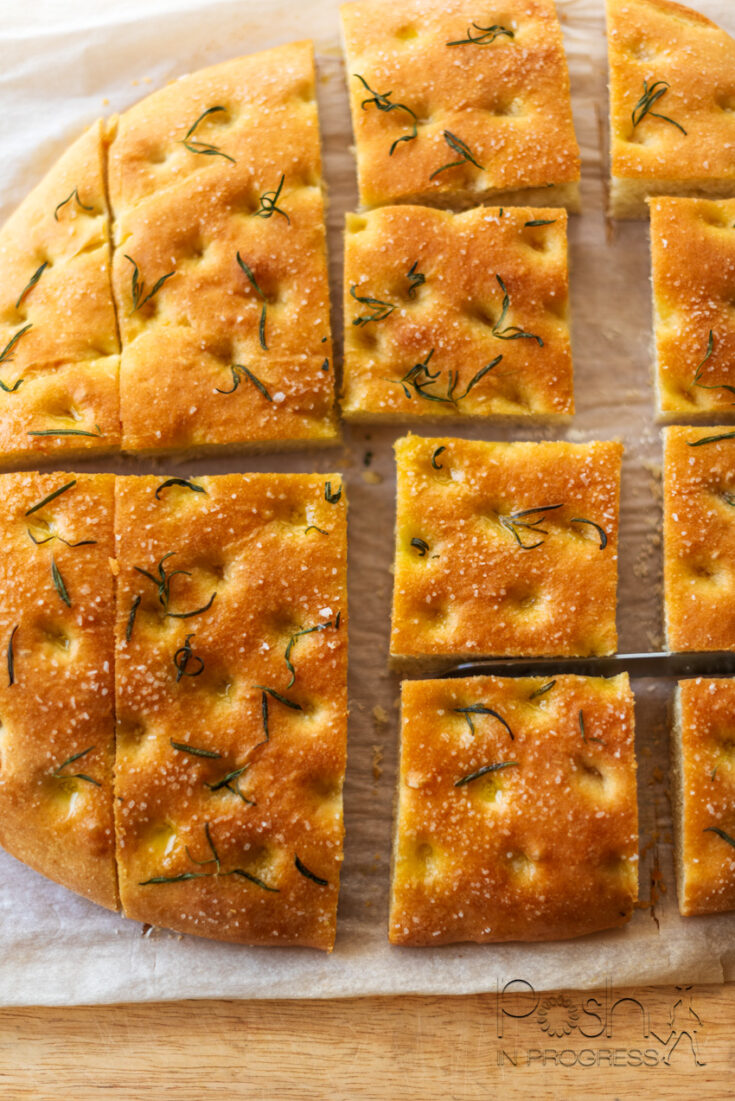
Ingredients
- 1 1/3 cup warm water (about 110°F)
- 2 teaspoons sugar or honey
- 1 (0.25 ounce) package active-dry yeast
- 3 1/2 cups all purpose flour
- 1/4 cup extra virgin olive oil, plus more for drizzling
- 2 teaspoons flaky sea salt, plus extra for sprinkling*
- 2 sprigs fresh rosemary
Instructions
- Add warm water and sugar to the bowl of a stand mixer with the dough attachment, and stir to combine.
- Add the yeast on top of the water and stir. Let it sit for 5-10 minutes until the yeast is foamy.
- Set a stand mixer or food processor to low speed, and add flour, olive oil and salt. Increase speed to medium-low, and continue mixing the dough for 5 minutes. If the dough is too sticky, add 1 tbsp at a time until the dough releases from the side of the bowl.
- Remove the dough from the mixing bowl, and use your hands to shape it into a ball.
- Add cooking spray to a bowl and then place the dough ball in the bowl and cover with a damp towel. Let the dough rise for 1 hour.
- Place the dough onto a floured surface, and roll it out into a large circle. The dough should be about 1/2 inch thick. Cover the dough again with the damp towel, and let the dough rise for another 20 minutes.
- Preheat oven to 400°F. Transfer the dough to a large parchment-lined baking sheet. You could also use a 9x13 pan if you prefer. Use your fingers to poke deep dents all around the dough circle.
- Drizzle two tablespoons of olive oil over the dough. I used my hands to smooth the olive oil all over the dough.
- Then, sprinkle rosemary and sea salt all over the dough. You may want to press the rosemary in so it stays a bit better after baking.
- Bake for 20 minutes, or until the dough is slightly golden and cooked through and serve warm. You can keep the focaccia in an airtight container for several days.
Final Thoughts
This focaccia recipe is super easy to make and so delicious. Baked focaccia is definitely a crowd favorite that makes delicious sandwiches or serves well with any pasta dish. The day I made this, my kids each at two pieces and still wanted more. Fresh focaccia bread is just so scrumptious and I know you’ll love it too. Don’t be afraid to try making homemade bread. I promise, it’s much easier than you think.
If you’re looking for another easy bread recipe, this dutch oven no knead bread is super easy to make too.

